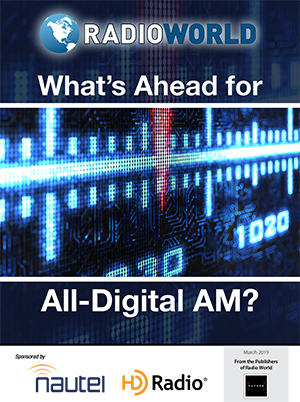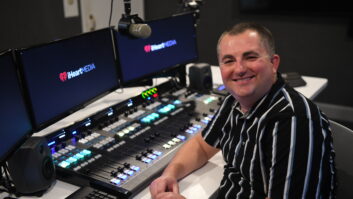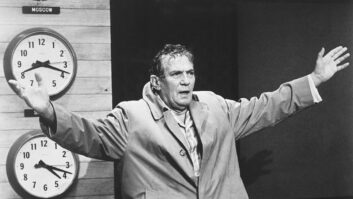 In a recent ebook, Radio World explored the implications of allowing all-digital operation on the AM band in the United States. Here’s an excerpt in which Beasley Broadcast Group VP of Engineering/CTO Mike Cooney shared his thoughts on the idea. Read the ebook here. Also, readers are invited to send a letter to the editor on this or any subject.
In a recent ebook, Radio World explored the implications of allowing all-digital operation on the AM band in the United States. Here’s an excerpt in which Beasley Broadcast Group VP of Engineering/CTO Mike Cooney shared his thoughts on the idea. Read the ebook here. Also, readers are invited to send a letter to the editor on this or any subject.Mike Cooney has given the topic some thought in his roles as VP of engineering/CTO of Beasley Broadcast Group, which owns 19 AM stations, and as the chair of the NAB Radio Technology Committee.
He believes the FCC would consider the licensing of all-digital AM if stations showed zeal for it. “So far, very few broadcasters have shown interest due to the limited number of HD-compatible radios and due to the technical limitations,” he said.
Members of the technology committee have discussed the idea at several meetings. “Sometime back, we took an informal poll and almost no one said they would consider putting an all-digital AM on the air if the rules allowed.”
That doesn’t mean sentiment couldn’t change quickly; and Cooney saluted the commission for being supportive of past all-digital AM testing (Beasley owns two of the stations that were tested by NAB and its partners).
[“We Look Forward to the Day of All-Digital AM”]
But he said he wasn’t aware of broadcasters beyond Hubbard that have shown serious interest in putting a full-time station on the air; and until the NAB or a consortium of broadcasters petitions the FCC, he doesn’t see it going anywhere.
“What became apparent during our original testing and also on the Hubbard station are some of the technical limitations and issues,” he continued.
“The number one issue for me is the lack of robustness of the signal. When you have a strong RF signal, the experience is pretty good and very similar to a low bit rate stream. It is not FM quality, but much better than our current AM signals.
“As you drive into weaker signal areas or approach strong power line interference, the signal frequently drops outs and goes to silence. The stronger the signal you have, the more infrequent the dropouts are, and you can drive under bridges, or have other environmental interference, and in many cases the signal is solid and does not drop.
“At night, the robustness is typically even worse, and our test station in Greenville, N.C., was almost unlistenable. That signal is 50 kW day and 10 kW night.”
Cooney’s second big concern is acquisition time to reacquire the signal, which he estimates at typically 5 seconds or longer. He said this “seems like an eternity when you are waiting for it to lock back in. This not something our current listener base would understand, or in my opinion, tolerate.”
[Subscribe to our newsletter and get it delivered right to your inbox.]
Could the expanded AM band (1610-1710) serve as a kind of test bed area for all-digital signals?
“I don’t really see too many negatives if someone wanted to use it,” Cooney said. “The only negative I would point out is the coverage at night is going to be very poor at a 1,000 watts. We are turning an expanded band AM off within the next month, and I see this happening more in the future. This may free up the band for more of these type of allocations.”
His biggest concern for the future of AM radio is the electric car. “A few manufacturers have already eliminated AM radios from their electric car models, and several more have made it clear they will not have AM radios in their future models,” he said.
“We have been told the cost to filter the interference to AM radio from the car gets into the hundreds of dollars per car,” Cooney said.
“The cost to filter the AM becomes too great of a cost when compared to the benefits to the customer. In surveys, fewer and fewer people list AM radio as something they expect in the future car, and this can only hurt the long-term life of AM.”












